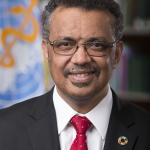Title
Inclusive planning and design for healthier cities
Plenary
The keys to a healthy city are trust and communication to create safe, inclusive and liveable communities. Redesigning cities for more safe space for cycling and walking cuts pollution, reduces car traffic, rejuvenates investment and makes cities more vibrant, better places to live. The space for walking needs to be designed for all to use, including people with temporary or permanent impaired mobility. Improving access for all is not only about designing buildings to be accessible but making public space accessible for all. And universal design for disabled access delivers greatly improved pedestrian environments for everyone.
Responses to Covid in creating outside space for restaurants, businesses and cycling lanes to make up for restricted public transport demonstrated just how much can be done quickly to improve public space. At the same time, Covid has undermined confidence in using public transport, especially for people that are visually impaired or use personal mobility devices. A major effort is needed now to restore confidence in the safety of public transport from a health perspective.
It is essential that the greenest options for mobility and key stakeholders working on accessibility have a place at the table in policy debate on the major issues we face, including climate change. At the COP meetings, for example, auto manufacturers are always part of the discussions, but cycling organisations have not been prominent. More broadly, international policy discussions are rarely organised in venues properly accessible to people with impaired mobility, which frequently excludes them from critical meetings. This neglected - very practical - aspect of our efforts to promote inclusion in policy development needs urgent correction.
We urgently need a transition to sustainable mobility, but that transition must be a just transition. Sustainable Urban Mobility Plans have proved a very effective tool in driving the change needed. This has become a requirement imposed by national governments – and in Europe by EU Law – for cities to make sustainable mobility central to their land-use planning. Sticks, as well as carrots, are needed to achieve the transition. The external costs of using cars need to be contained, through restrictions, taxation or pricing use of our streets, and it’s a myth that this hurts vulnerable parts of the population. Quite the reverse if policies are designed well. The 30 km per hour speed limits being introduced across the streets of many cities around the world are a major advance in making our streets safe for walking, cycling and accessing public transport. And making our cities much more liveable.
Jonkoping provides a strong example, winning Europe’s award for the most accessible city. The key has been careful consultation with representatives of disabled communities. The dialogue created includes all political parties and a broad range of stakeholders. Representatives of all departments in the government of the city regularly meet civil rights organisations. The consultation begins at the very earliest stages of investment plans and policy initiatives. This is a continuous process now normalised in the political and planning processes. Mapping accessibility for disabled groups has proved a very practical tool for opening up the city. The accessibility investments made extend into the countryside around the city so that all citizens have the opportunity to access nature, something the people of Jonkoping wanted.
Barcelona has been redesigning the city for many years now and is continuing to extend its “Super Blocks”. These divert car traffic to roads around the designated blocks and preserve the streets within for active mobility and public space, transforming the liveability of these areas. Public transport connections are an essential part of maintaining their accessibility. Training of the staff on all of the city’s public transport services to understand all user groups, including LGBT users, is proving successful in Barcelona in creating a safer, more secure environment for travellers. This is a model for other authorities to follow. It is critical to reflect human diversity in transitioning to more liveable cities.
Cities need to have the power to make the necessary changes. In many places, roads serving transit traffic are fully controlled by central government. These roads also serve local communities, and close consultation with the local authorities, at the very least, is needed to manage traffic on these roads if cities are to be able to become more liveable.
Speakers

Gibet Camós
Director of Development and International Relations
Transports Metropolitans de Barcelona (TMB)




